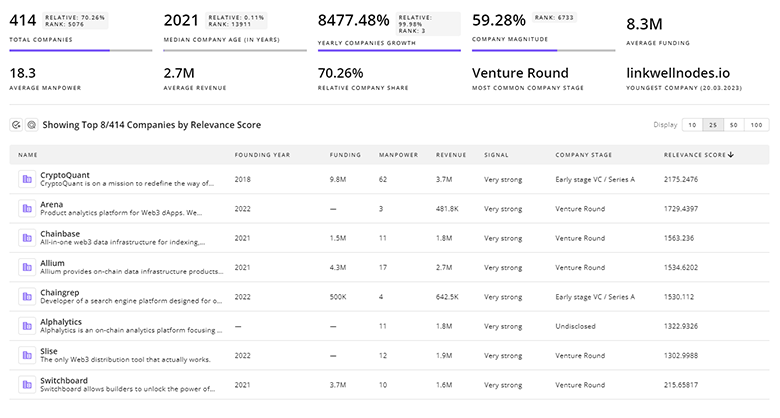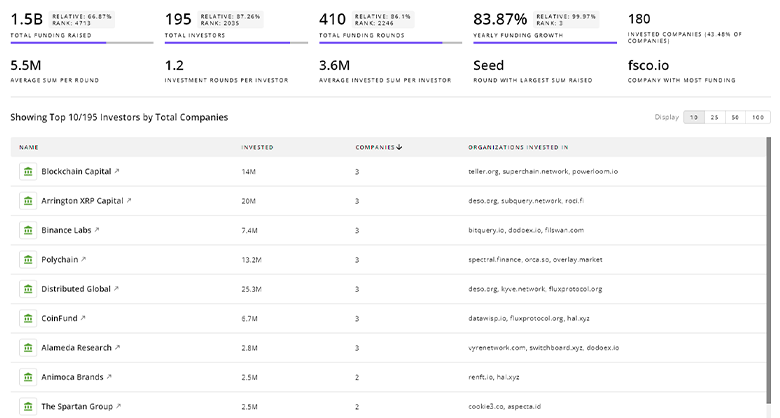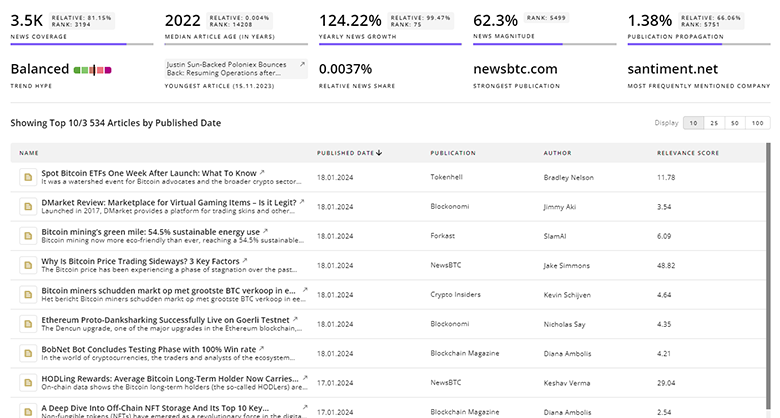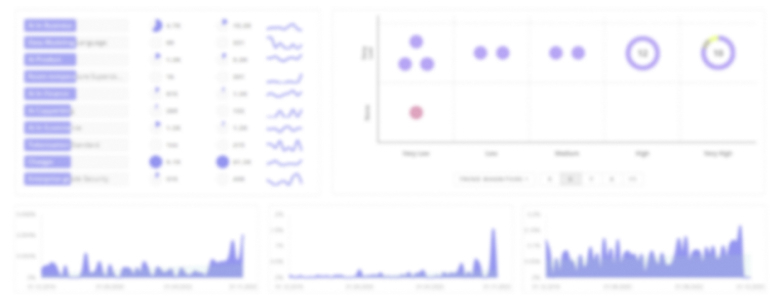
Electronic Health Records Management Report
: Analysis on the Market, Trends, and TechnologiesThe electronic health records management sector consolidates around cloud delivery, AI augmentation, and data-exchange infrastructure while the internal trend data shows the topic group has attracted $47.25B total funding to date, signaling material investor commitment to platform and service scale-up. Market forecasts in external research place current global market value between roughly USD 27–34 billion and project it to exceed USD 40 billion within the decade, driven by cloud migration, interoperability mandates, and AI-enabled automation Electronic Health Record Market Size & Share Report, 2032 Global Electronic Health Records EHR Market Report 2025-2033 Electronic Health Records Market (2025-2030) Size, Share & Trends.
This article was last updated 54 days ago. If you find any info is missing, let us know!
Topic Dominance Index of Electronic Health Records Management
The Dominance Index of Electronic Health Records Management looks at the evolution of the sector through a combination of multiple data sources. We analyze the distribution of news articles that mention Electronic Health Records Management, the timeline of newly founded companies working in this sector, and the share of voice within the global search data
Key Activities and Applications
- Clinical documentation and charting — capture discrete encounter data, structured problem lists, medication lists, and longitudinal notes to enable care continuity and compliance.
- Revenue cycle and billing automation — integrate claims scrubbing, denial management, and RCM workflows within or alongside EHRs to protect margin and accelerate cash collection.
- Interoperability and health information exchange — use FHIR/HL7 APIs and integration platforms to connect disparate EHRs, labs, imaging, and HIEs for real-time data flow and care coordination Electronic Health Record Integration: The Complete Guide to Seamless Healthcare Data Connectivity in 2025
- AI clinical decision support and automated documentation — embed ML models for risk scoring (readmission, sepsis), automated note generation, and coding assistance to reduce clinician time on paperwork
- Telehealth and RPM integration — incorporate virtual visits, device streams, and ePROs into the patient record for chronic care and decentralized workflows.
- Specialty and workflow-specific modules — deliver discipline-tailored EMRs (behavioral health, ophthalmology, wound care) that reduce customization friction and accelerate user acceptance.
Emergent Trends and Core Insights
- Cloud first deployments dominate new wins; cloud EHRs reduce upfront cost and speed deployments, and they represent the largest product slice in multiple market studies Electronic Medical Records Market Overview 2025.
So what: vendors without mature SaaS offerings face shrinking addressable opportunity for greenfield ambulatory and mid-market deals. - AI moves from point tooling to embedded workflow co-pilots (autoscribes, document reasoning, clinical alerts); several vendors now surface production LLM/NLP or vision models to process unstructured inputs Tennr Beam Health.
So what: buyers evaluate AI by measurable productivity gains and safety controls; startups that prove measured reductions in clinician screen time gain fast commercial traction. - Interoperability enforcement and FHIR adoption create new product opportunities in middleware, HIEs, and API platforms.
So what: firms that package secure, certified connectors plus orchestration logic outcompete point adapters in large health networks. - Niche, specialty EHRs gain share in verticals where workflow fit drives adoption (behavioral health, wound care, gynecology) doctoGyn.
So what: large platform vendors must partner or acquire to close specialty gaps or risk losing mid-market renewals. - Security and compliance remain gating factors; ransomware events and regulation push investment in access controls, auditability, and consent engines Global Electronic Medical Records (EMR) Market.
So what: security posture and third-party risk assessments increasingly determine procurement decisions.
Technologies and Methodologies
- FHIR and API orchestration — standardized resource models to normalize records and enable modular app ecosystems.
- Embedded ML/NLP autoscribing and document reasoning — real-time speech-to-note, coded summaries, and document classification to reduce clinician workload.
- Cloud-native microservices with tenant isolation — enable modular feature rollout, faster upgrades, and multi-site deployments.
- Federated analytics and privacy-preserving learning — analyze care outcomes across institutions without centralizing PHI for research and population health.
- Blockchain for auditability and consent management — experimental but appearing in proofs of concept for immutable access logs and patient consent flows EMRChains.
- Low-code workflow builders and specialty templates — accelerate clinic adoption by letting clinicians adapt templates without lengthy IT projects.
Electronic Health Records Management Funding
A total of 1.4K Electronic Health Records Management companies have received funding.
Overall, Electronic Health Records Management companies have raised $51.0B.
Companies within the Electronic Health Records Management domain have secured capital from 5.1K funding rounds.
The chart shows the funding trendline of Electronic Health Records Management companies over the last 5 years
Electronic Health Records Management Companies
- Leyr — Leyr builds a unified API/integration platform that reduces the engineering burden of connecting apps to multiple EHRs and maintaining adapters. The company focuses on standardized interfaces and monitoring to keep integrations stable in production and shorten partner onboarding cycles. Leyr targets health app vendors and regional HIEs that need reliable, maintained connectors rather than one-off point integrations
- Long Health — Long Health offers a California-focused data exchange and compliance engine that supports real-time data sharing to meet state policy requirements. The product emphasizes secure routing and consent controls to help providers comply with regional mandates while enabling care coordination across networks
- CedrusMed — CedrusMed focuses on behavioral health and targeted case management with a cloud EHR tailored to agency workflows, billing requirements, and regulatory forms. The company positions low implementation friction and prebuilt templates as ways to improve adoption in community mental health settings
- MyDigiRecords — MyDigiRecords builds consumer-facing digital lockers and personal health record (PHR) capabilities that let patients collect immunizations, reports, and prescriptions and share them with providers. Their approach targets patient empowerment and simpler record transfers for episodic care or referrals
Uncover actionable market insights on 7.0K companies driving Electronic Health Records Management with TrendFeedr's Companies tool.

7.0K Electronic Health Records Management Companies
Discover Electronic Health Records Management Companies, their Funding, Manpower, Revenues, Stages, and much more
Electronic Health Records Management Investors
Get ahead with your investment strategy with insights into 4.2K Electronic Health Records Management investors. TrendFeedr’s investors tool is your go-to source for comprehensive analysis of investment activities and financial trends. The tool is tailored for navigating the investment world, offering insights for successful market positioning and partnerships within Electronic Health Records Management.

4.2K Electronic Health Records Management Investors
Discover Electronic Health Records Management Investors, Funding Rounds, Invested Amounts, and Funding Growth
Electronic Health Records Management News
TrendFeedr’s News feature offers access to 11.7K news articles on Electronic Health Records Management. The tool provides up-to-date news on trends, technologies, and companies, enabling effective trend and sentiment tracking.

11.7K Electronic Health Records Management News Articles
Discover Latest Electronic Health Records Management Articles, News Magnitude, Publication Propagation, Yearly Growth, and Strongest Publications
Executive Summary
EHR management now centers on three commercial levers: delivering cloud platforms that lower adoption friction, embedding measurable AI to reduce clinician administrative time, and enabling standards-based interoperability so data flows where care decisions occur. Market forecasts differ by methodology, but the trend is clear: steady market expansion and selective acceleration where AI and regulatory drivers align. For operators and investors, the highest value lies in proven use cases that reduce cost or reclaim clinician time, scalable integration assets (FHIR/APIs), and defensive security and compliance capabilities. Niche EHRs with deep workflow fit will continue to win in specialty domains and will either integrate with larger platforms or become acquisition targets as consolidation continues.
Have expertise in trends or technology? Your input can enrich our content — consider collaborating with us!







